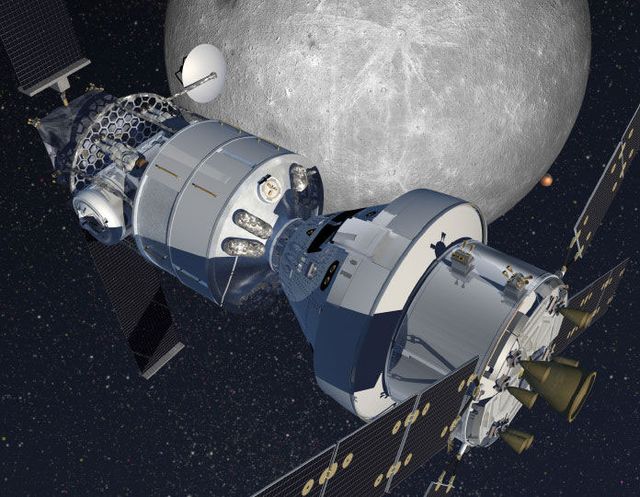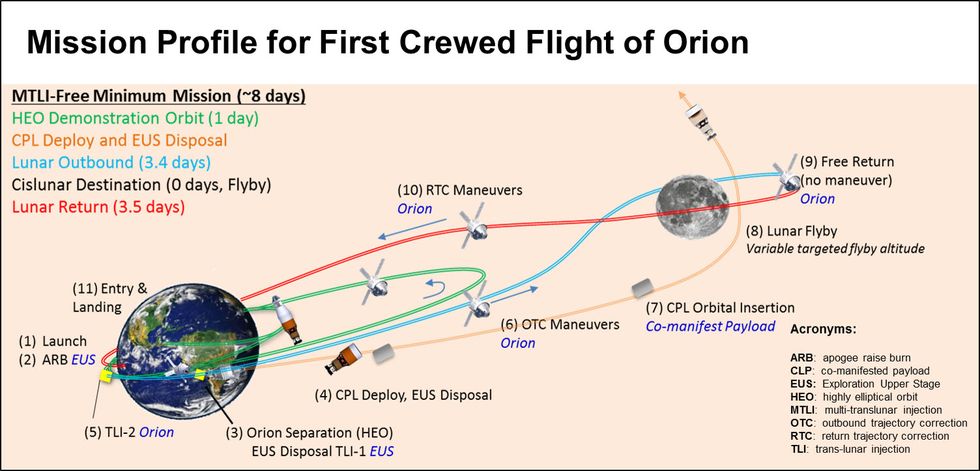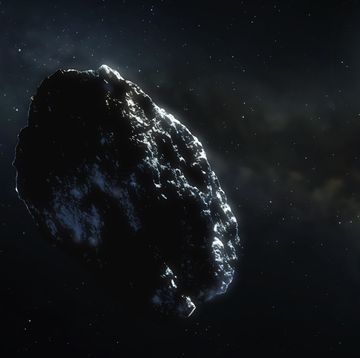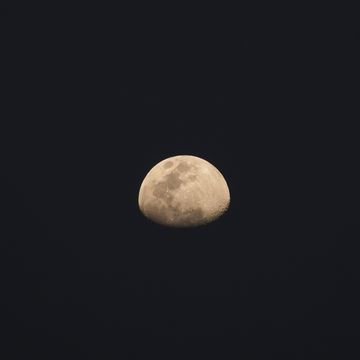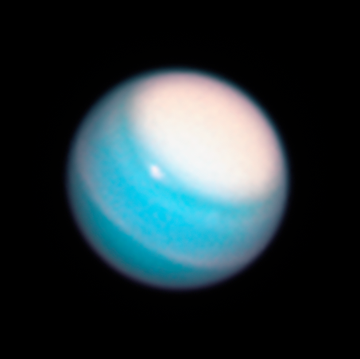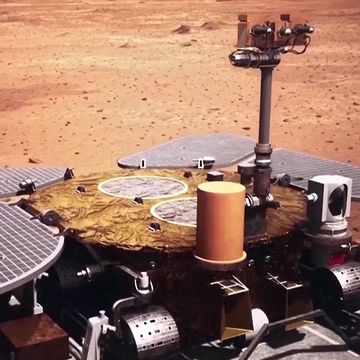There is still no official NASA mission to Mars, but after years of uncertainty, America's space agency is giving us a glimpse of its grand strategy to extend human presence beyond low-Earth orbit with a plan to build a solid technological foundation for sending astronauts to other worlds.
The decades-long space exploration schedule, detailed in a press conference last week with NASA's William Gerstenmaier, lists 10 upcoming missions involving NASA's new-generation Orion spacecraft. But unlike earlier disjointed proposals for loosely defined missions, this new plan is laid out more like an Ikea manual—a step-by-step guide on how to get to Mars. NASA says the enterprise relies on a substantial but not outrageous budget, and that the plan has been drafted in close coordination with NASA's key partners like the European Space Agency, Roscosmos, JAXA, and the Canadian Space Agency.
A New Plan
The main goal of the Orion program is to assemble aMoon-orbiting space station, which by the end of the 2020s could be beefed up to become a kind of interplanetary mothership. Without additional money, the proposed spacecraft will not be able to put astronauts onto the surface of Mars, but it will be able to carry a crew into the vicinity of the Red Planet as early as 2033, says Gerstenmaier. Visits to Martian moons Phobos and Deimos and expeditions to asteroids might also be possible.
In a nutshell, this is the closest humanity's ever been to setting foot on Mars and many other destinations in the Solar System. The program will certainly be the boldest, riskiest, and most ambitious undertaking for human spaceflight in nearly half a century—since the end of the Apollo program in 1972.
Now for a gut punch of reality. Due to budget constraints, the Mars program likely move at a snail's pace, according to available flight manifests. That means it's unlikely astronauts will have a chance to leave new footprints on another world before well into the 2030s. An even longer wait is a bitter pill to swallow, and that probably explains why NASA has been shy about publicizing its mega-plan right away.
Long Road to a Moon Base
It's easy to draw parallels with the Apollo program's 10-year plan for putting a man on the moon to the Orion project, which has been in planning and development since 2003 and is not even expected to carry its first crew until 2021. The first manned flight of Orion, called Exploration Mission 2 or EM-2, was recently "de-ambitioned" from entering a lunar orbit to just running a quick loop behind the Moon and returning to Earth eight days after liftoff from Cape Canaveral.
Orion's approach to the Moon will be carefully navigated along the so-called "free-return trajectory," meaning that even if the ship's main engine fails, leaving the crew without a capability to maneuver, the gravitational field of the Earth will still pull the capsule back to the home planet for a safe landing. However, NASA has reserved an option to extend the mission and, possibly, enter lunar orbit if everything works perfectly in the initial phase.
After its maiden flight with a pilot in tow, NASA hopes to begin annual flights to the lunar orbit starting in 2023. All but one of the eight planned missions in NASA's latest flight manifest will be dedicated to the assembly of the mini-International Space Station in lunar orbit. Various pieces of the future habitat will be hitchhiking on each Orion flight.
The first assembly mission, EM-3, will carry a power and propulsion module with a pair of huge solar panels to supply electricity to power-hungry ion thrusters of the module. The two following Orion flights will bring habitation modules, built in Europe and Japan, and bolt them to the propulsion module. At least one unmanned cargo ship will resupply the station in 2024.
Four more missions in the second half of the 2020s will deliver a bigger, better power and propulsion module around 2029, which might be able to carry astronauts as far as Mars' orbit.
In the meantime, NASA's international partners will have an opportunity to dispatch robotic and, possibly, even human missions to the surface of the Moon. With the nascent outpost growing in the vicinity of the Moon, the Orion crews could extend their stays in lunar orbit from a week to months or even a year. Inhabitants of the outpost could also make outings to other locations near the Moon, such as a visit to a scientifically interesting Lagrangian points, where gravitational forces of the Moon and the Earth cancel each other out.
Test Bed
But the main purpose of the near-lunar habitat will be as a test bed for the new-generation electric propulsion systems that will also be crucial for a Mars trip.
NASA hopes to conduct endurance tests for closed-loop life-support systems and find out whether it is possible to keep crews safe for months at a time in the radiation-filled vacuum of space. In 2026, NASA plans to take a break in the construction of the near-lunar orbital station to launch the so-called Asteroid Redirect Mission. Instead of visiting the station, Orion will meet up in lunar orbit with a space rock delivered by a robotic space tug. The crew will then bring samples of the asteroid back to Earth.
In the past few months, NASA and its partners quietly charted a roadmap that leads to a summit of all agencies involved in the International Space Station program as early as August 2017. NASA hopes it will green light the effort, so that the components of the near-lunar station could be ready to fly in time with their respective Orion missions.
It's been 44 years since NASA's last attempt to put a man on another planet, but finally the space agency is once again preparing to push humans beyond the gravitational grasp of mother Earth—and beyond.
Anatoly Zak is the publisher ofRussianSpaceWeb.com and the author ofRussia in Space, the Past Explained, the Future Explored

